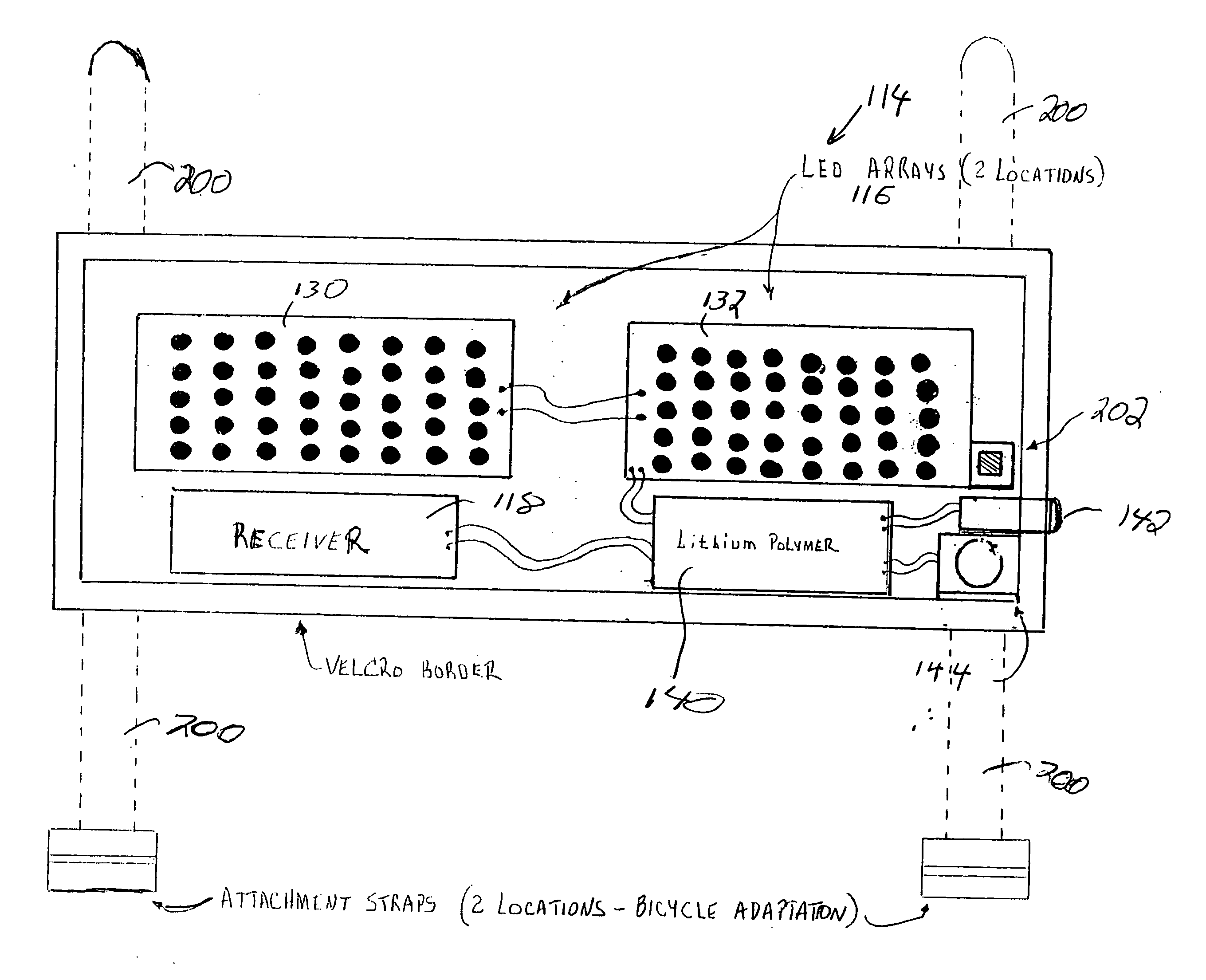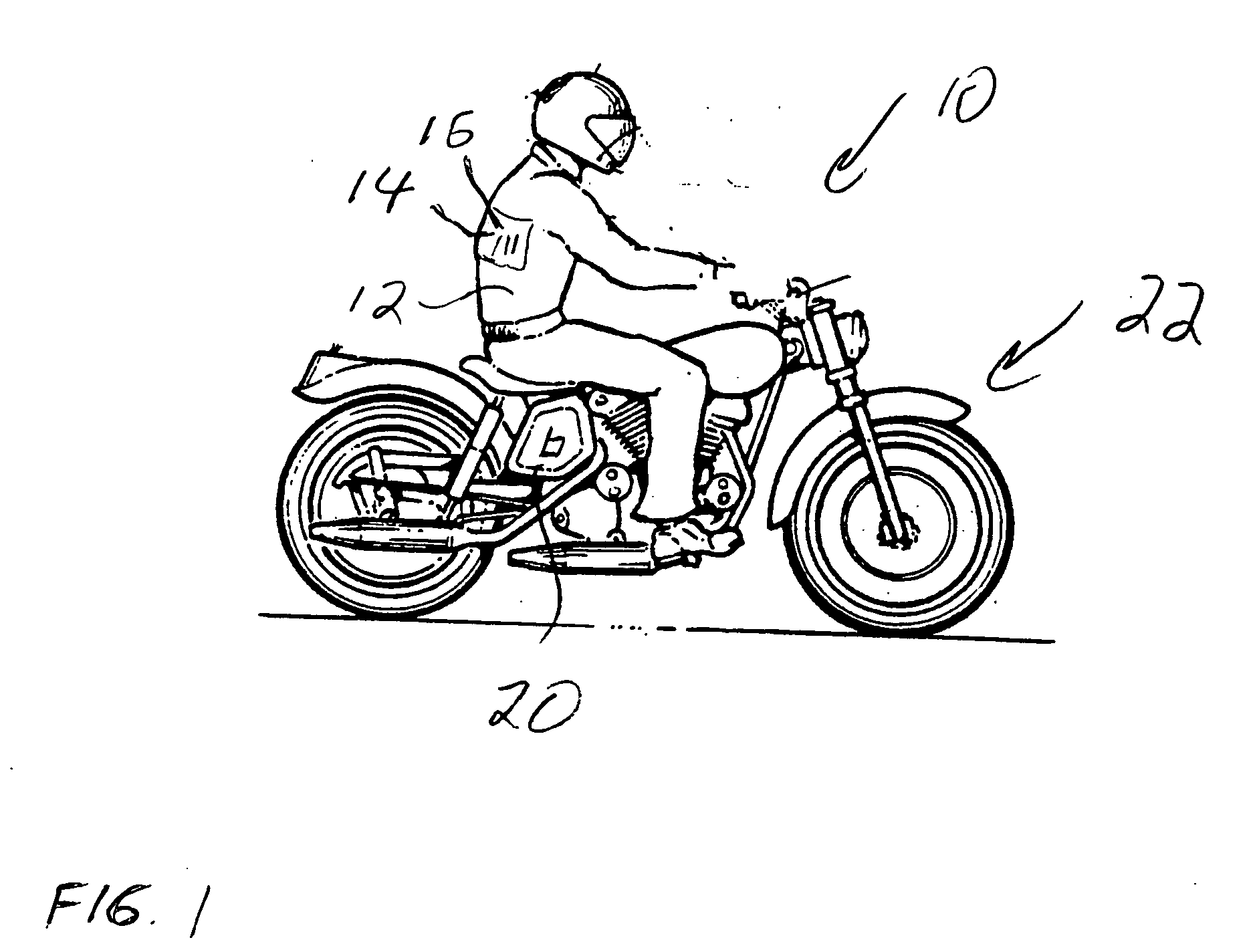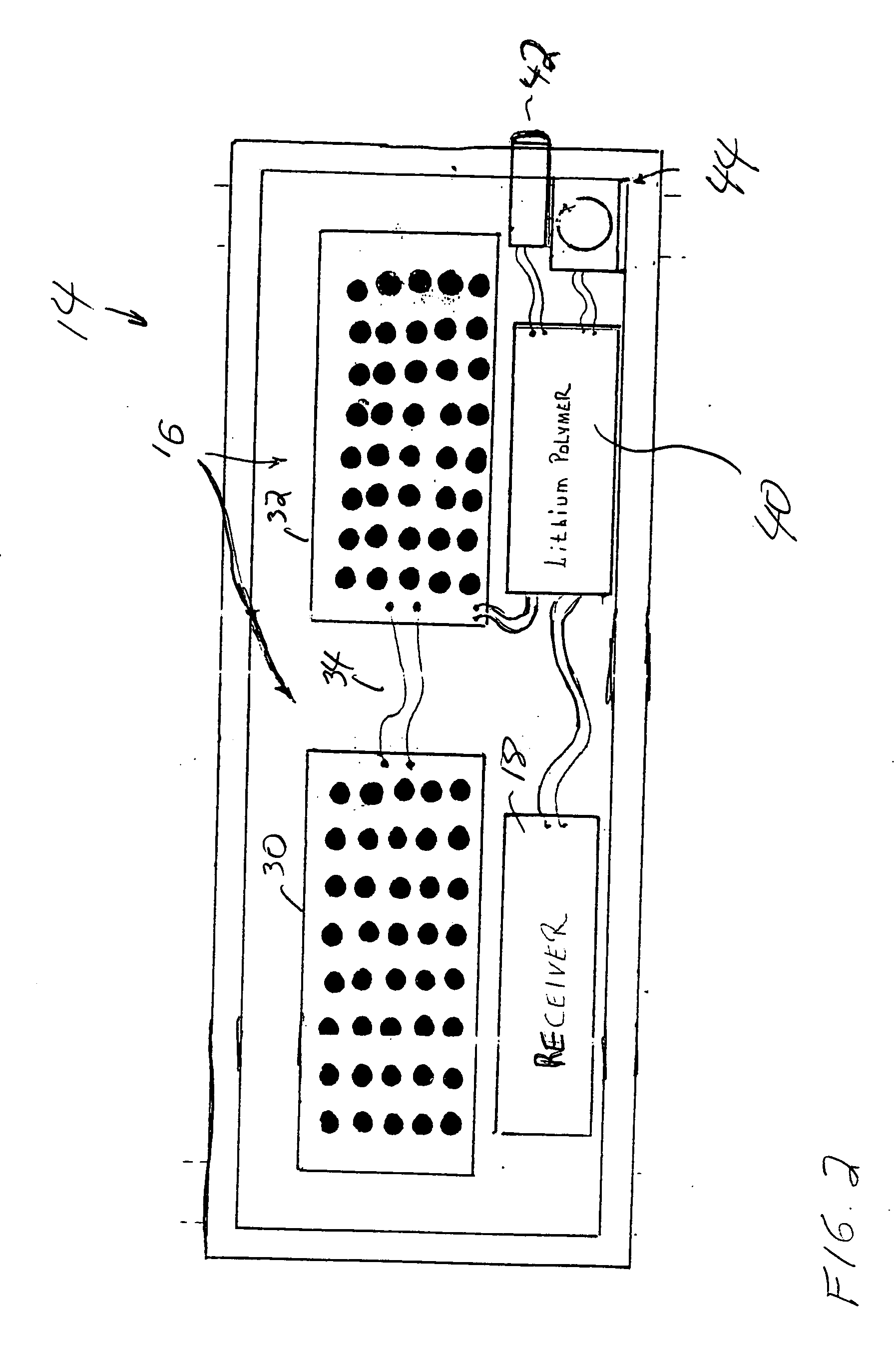Signaling safety system
a safety system and signal technology, applied in the direction of optical signals, cycle equipment, vehicle components, etc., can solve the problems of many drivers not being able to see motorcycles/bicycle extreme danger of riding motorcycles/bicycles on the road, and difficult to see motorcycles/bicycles
- Summary
- Abstract
- Description
- Claims
- Application Information
AI Technical Summary
Benefits of technology
Problems solved by technology
Method used
Image
Examples
Embodiment Construction
[0029] A signaling device for use by a rider on a motorcycle or bicycle is disclosed. FIG. 1 is a side view of a signaling system 10 worn by a rider 12 in the preferred embodiment of the present invention. The rider wears a jacket having an indication mechanism 14. The indication mechanism includes an LED array 16 which may provide an indication for a turn indication and brake or deceleration indications. The indication mechanism is affixed to a garment worn by the rider. The indication mechanism includes a receiver 18. The signaling system also includes a transmitter 20 affixed to a motorcycle 22. The transmitter is connected to a motorcycle signal interface 24.
[0030] Preferably, the indication mechanism is affixed to a jacket, but any garment worn by the rider may be utilized. Additionally, the indication mechanism is preferably removable and may be held in position to the garment by any attachment means, such as Velcro strips or straps. Also, in the preferred embodiment of the p...
PUM
 Login to View More
Login to View More Abstract
Description
Claims
Application Information
 Login to View More
Login to View More - R&D
- Intellectual Property
- Life Sciences
- Materials
- Tech Scout
- Unparalleled Data Quality
- Higher Quality Content
- 60% Fewer Hallucinations
Browse by: Latest US Patents, China's latest patents, Technical Efficacy Thesaurus, Application Domain, Technology Topic, Popular Technical Reports.
© 2025 PatSnap. All rights reserved.Legal|Privacy policy|Modern Slavery Act Transparency Statement|Sitemap|About US| Contact US: help@patsnap.com



